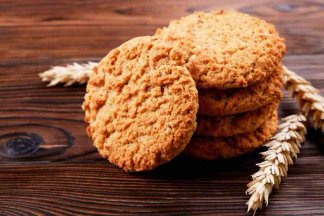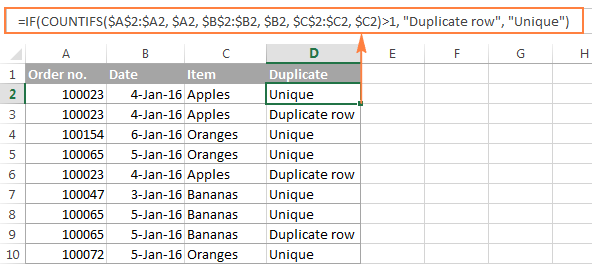Table of Contents
Biscottiamo: A Flavorful Journey Through Italian Biscuits
“Biscottiamo” isn’t just a word—it’s an invitation to experience the diverse and beloved traditions of Italian biscuits. Derived from “biscotto,” which means “twice-baked” in Italian, Biscottiamo captures the essence of these crispy, flavorful delights that have been enjoyed for centuries. Each bite of a biscotto is a journey through time, culture, and the rich tapestry of Italy’s culinary history.
A Brief History of Italian Biscuits
Italian biscuits have a storied past, dating back to ancient times when they were a staple for travelers and soldiers due to their long shelf life. The term “biscotto” originates from the Latin word “bis coctus,” meaning “twice-cooked,” a method that ensured the biscuits remained dry and preserved for extended periods. Initially, these hard, dry biscuits were simple in flavor, designed to sustain those on long journeys or in times of scarcity.
Over the centuries, as sugar became more accessible and baking techniques evolved, Italian biscuits transformed into the sweet, flavorful treats we know today. Each region in Italy began developing its own unique recipes, incorporating local ingredients and cultural influences, leading to the rich variety of biscotti available today.
The Art of Biscotti Making
The process of creating biscotti is as much an art as it is a tradition, with each region in Italy boasting its own unique recipes and techniques. Traditional biscotti are made by baking the dough twice—first, the dough is shaped into a log and baked until firm, then sliced into individual biscuits and baked again until crisp. This twice-baked process gives biscotti their characteristic crunch, making them perfect for dipping in coffee, wine, or even tea.
The ingredients used in biscotti are typically simple—flour, sugar, eggs, and nuts or fruits—but the variations are endless. Some regions add anise or citrus zest for a hint of flavor, while others might include chocolate, spices, or even liqueurs. The beauty of biscotti lies in their versatility, as bakers can experiment with different combinations of ingredients to create their own signature flavors.
Popular Types of Italian Biscuits
From the crunchy Cantucci of Tuscany to the buttery Canestrelli of Liguria, Italian biscuits come in a variety of flavors and textures that cater to every palate. Here are some of the most beloved types of Italian biscuits:
Cantucci (Tuscan Almond Biscuits)
Cantucci, also known as “Biscotti di Prato,” are twice-baked almond biscuits that are traditionally dipped in Vin Santo, a sweet dessert wine. Originating from the region of Tuscany, these crunchy biscuits are made with a simple dough of flour, sugar, eggs, and whole almonds. Their hard texture makes them perfect for dipping, allowing the flavors to be absorbed and softened by the wine.
Amaretti (Almond Cookies)
Amaretti, made from almond paste, sugar, and egg whites, are beloved for their chewy texture and intense almond flavor. These biscuits hail from the regions of Lombardy and Piedmont and are often enjoyed with coffee or dessert wine. There are two main types of amaretti: Amaretti di Saronno, which are crisp and airy, and Amaretti morbidi, which are soft and chewy.
Baci di Dama (Lady’s Kisses)
Baci di Dama, hailing from Piedmont, are delicate hazelnut biscuits sandwiched together with a layer of rich chocolate. Their name, which translates to “Lady’s Kisses,” comes from their resemblance to two lips kissing. These bite-sized treats are known for their melt-in-the-mouth texture and the perfect balance of nutty sweetness with creamy chocolate.
Canestrelli (Butter Cookies)
Canestrelli, with their crumbly texture and buttery flavor, are a favorite in Liguria and often dusted with powdered sugar. These daisy-shaped biscuits are typically made with flour, butter, sugar, and eggs, and their delicate flavor makes them a popular choice for tea time or as a light dessert.
Regional Variations and Specialties
Each region of Italy has its own biscuit specialties, reflecting the local ingredients and cultural influences that shape their distinct flavors. Let’s explore the unique biscuits from different parts of Italy:
Northern Italy
In Northern Italy, biscuits like Zaletti and Baicoli showcase the influence of cornmeal and butter in the region’s baking traditions. Zaletti, from the Veneto region, are made with cornmeal and raisins, while Baicoli, from Venice, are thin, crisp biscuits traditionally served with coffee or zabaglione, a sweet wine custard.
Central Italy
Central Italy is known for its biscotti with simple ingredients, such as the Anise-flavored Anicini from Lazio. These small, crisp biscuits are infused with the distinctive licorice-like flavor of anise seeds, making them a popular accompaniment to after-dinner liqueurs.
Southern Italy
The biscuits of Southern Italy, such as the honey-infused Mostaccioli, reflect the region’s love for bold, sweet flavors. Mostaccioli are traditionally shaped like diamonds and often decorated with colorful sprinkles or icing, making them a festive treat during holidays and special occasions.
The Modern Twist: Italian Biscuits Today
While traditional recipes remain beloved, modern Italian bakers are experimenting with new flavors and ingredients to give classic biscuits a contemporary twist. From adding exotic spices like cardamom and ginger to incorporating ingredients like dried fruits, chocolate, and even savory herbs, the evolution of Italian biscuits continues as bakers push the boundaries of flavor and creativity.
Some bakers are also creating gluten-free or vegan versions of traditional biscotti to cater to dietary preferences and restrictions, ensuring that everyone can enjoy these beloved treats. Despite these modern innovations, the essence of Italian biscuits—simple, high-quality ingredients, and time-honored baking techniques—remains at the heart of every bite.
Pairing Italian Biscuits with Beverages
Whether enjoyed with coffee, wine, or even tea, pairing Italian biscuits with the right beverage can elevate the tasting experience. For example, the classic combination of Cantucci and Vin Santo is a match made in heaven, with the sweet, nutty flavors of the biscuit complementing the rich, fruity notes of the wine.
Similarly, Amaretti pairs wonderfully with a cup of espresso, as the strong, bitter coffee balances the sweetness of the biscuit. For a lighter option, Canestrelli can be enjoyed with a cup of tea, allowing the delicate butteriness of the biscuit to shine.
Making Your Own Italian Biscuits at Home
With a few basic ingredients and a little patience, you can recreate the magic of Italian biscuits in your own kitchen. Here’s how you can start your biscotti journey:
Ingredients and Tools
To begin, you’ll need essential ingredients like flour, sugar, eggs, and nuts, along with basic baking tools like mixing bowls, a baking sheet, and a sharp knife for slicing the biscuits.
Step-by-Step Recipe for Classic Biscotti
Follow this simple recipe to create your own batch of classic almond biscotti:
- Mix the Dough: Combine flour, sugar, eggs, and almonds in a mixing bowl to form a dough.
- Shape and Bake: Shape the dough into a log and bake until firm.
- Slice and Bake Again: Once cooled, slice the log into individual biscuits and bake again until crisp.
Tips for Perfecting Your Biscuits
Achieving the perfect biscotti texture can be tricky, but these tips will help:
- Use room-temperature ingredients: This ensures even mixing and a consistent dough.
- Allow the log to cool before slicing: This prevents crumbling and ensures clean cuts.
- Experiment with flavors: Add citrus zest, spices, or chocolate chips for a unique twist.



